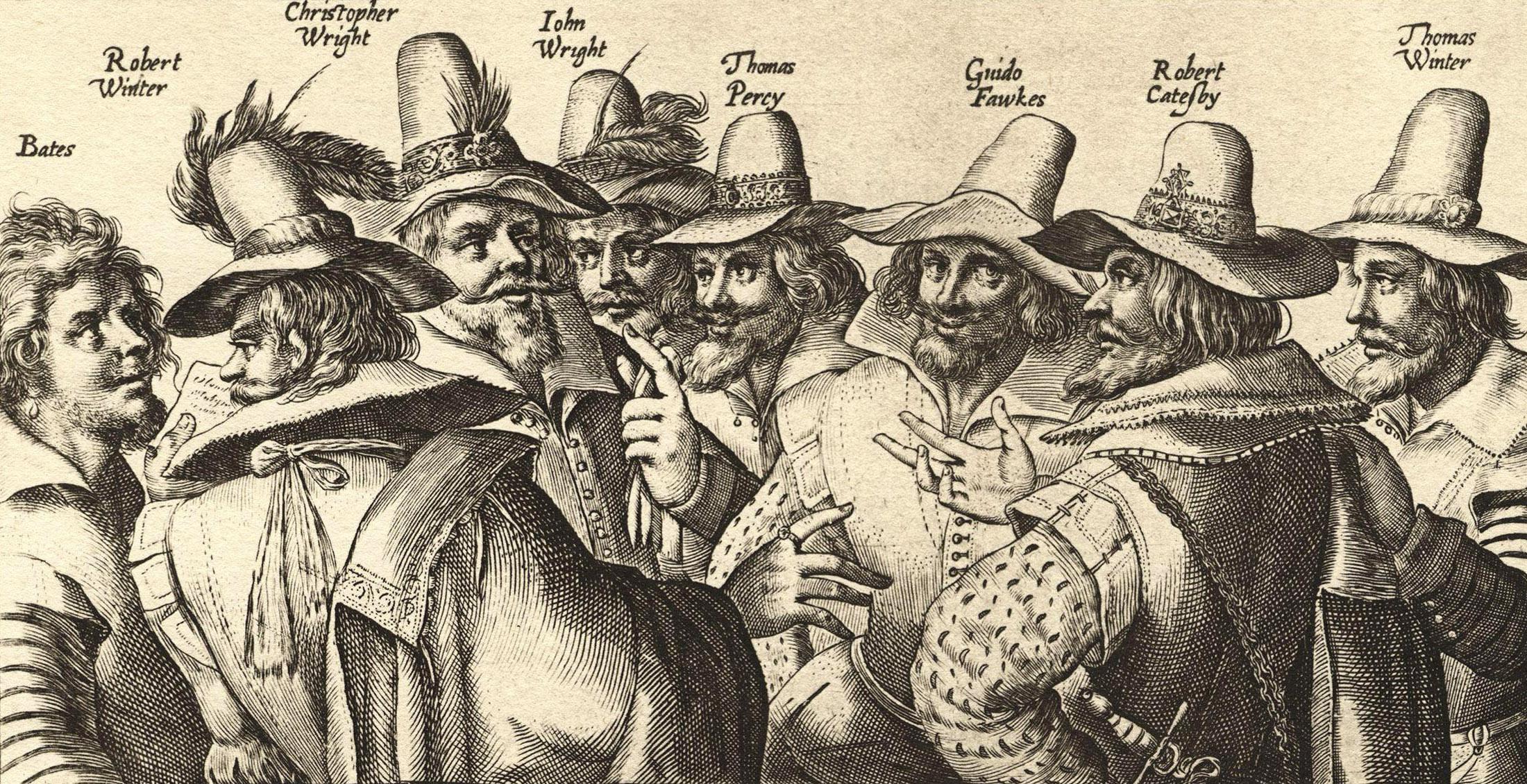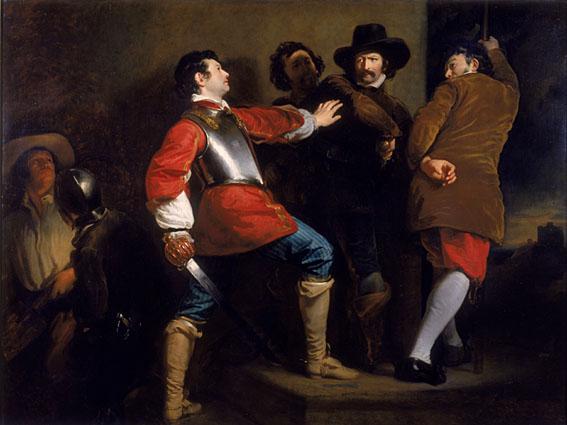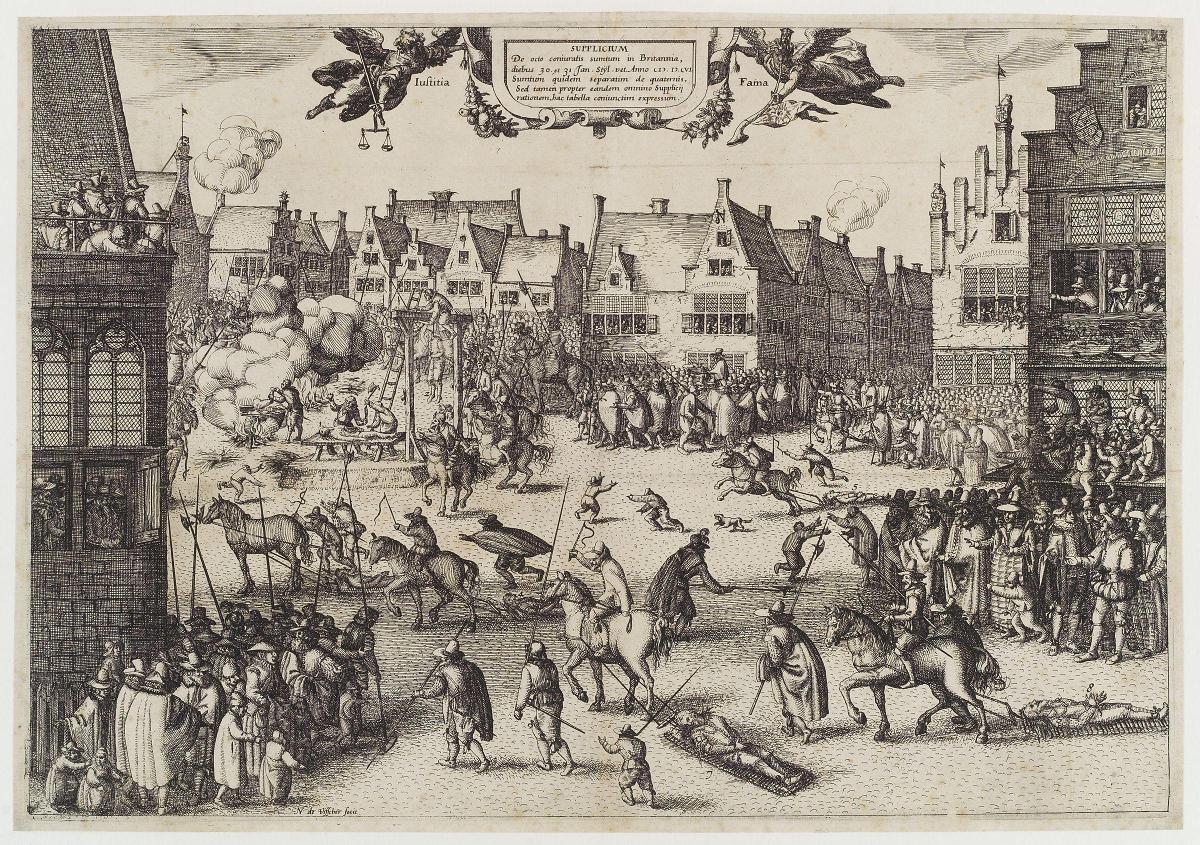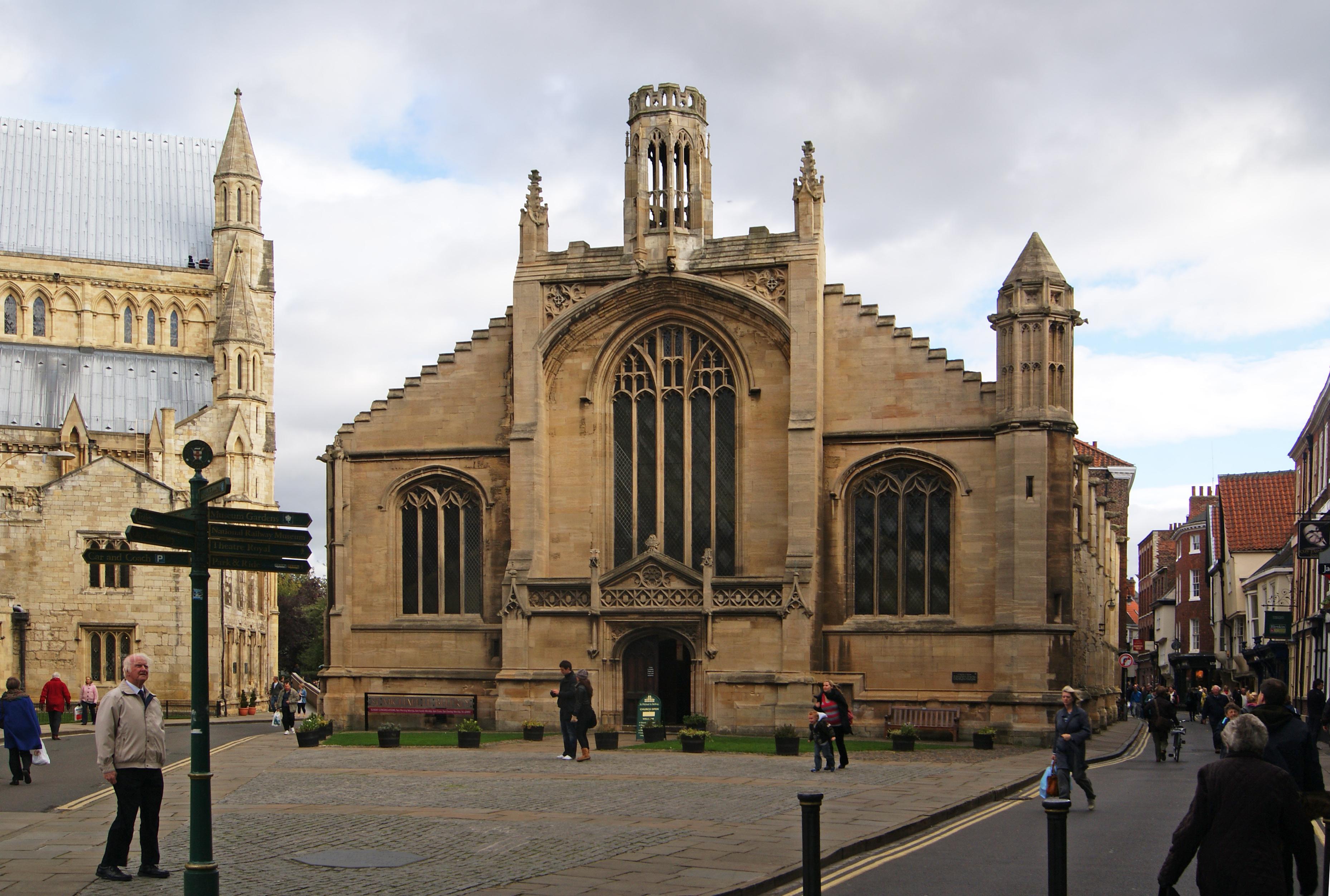Guy Fawkes, aka the 'V for Vendetta' Guy, Is Based on a Real Person
Updated Nov. 5 2020, 7:18 p.m. ET

If it wasn't for popular movies and TV shows, there'd be a lot of historical facts that would probably fall to the wayside in our collective consciousness. You'd be surprised by the vast amount of people who legitimately thought that Abraham Lincoln: Vampire Slayer was based on a true story, and that Game of Thrones "is based on history." So it's no surprise that there are a lot of folks who want to know if Guy Fawkes was real.
Yes, Guy Fawkes was indeed a real person.
If you're wondering who Guy Fawkes is, it's the fellow that the V for Vendetta masked man is based off of. The curly mustached, goateed, and pointy-chinned individual was indeed a real-life man who became known for his failed "Gunpowder Plot" on Nov. 5, 1605.
While Fawkes wasn't acting alone, he was the man most famously associated with the scheme to destroy the Houses of Parliament with huge barrels of gunpowder.

Wait, was Guy Fawkes a bad guy?
Well, he certainly has the cartoonishly distinct facial hair of a villain you'd find in a Rocky & Bullwinkle era animated short. The man was born in the month of April in 1570 in York and was killed on Jan. 31, 1606 by execution for his plot to blow up the House of Lords and kill James I and IV in the process. So if you are a loyalist to the crown, then yes, the dude was most certainly a bad guy.
He's also probably not going to be your favorite person if you're a fan of classic architecture and don't really think that "the ends justify the means" when it comes to toppling governments. There was most certainly going to be a lot of collateral damage as a result of his plot to destroy the House of Lords.

Fawkes' father, who died when he was young, was Protestant, as was his mother. However, when she remarried some years later, she converted to Catholicism (her new husband's religion). Fawkes seemed to take to this sect of Christianity and officially converted when he was a teenager.
This most likely contributed to his disdain for the Protestant ruling class in England at the time and could have been a significant factor in his decision to get involved with the Gunpowder Plot.
Fawkes met a man by the name of Thomas Wintour in 1604 while fighting for the Spanish in Flanders. Wintour had told Fawkes about a plan to assassinate the king and Fawkes was all about it.
Over the course of a year and a half, Fawkes, Wintour, and a bunch of other conspirators formulated their plan to destroy the monarchy. They ultimately settled on a huge explosion to do the trick.

This would be attained by transporting some 36 barrels packed with gunpowder into the cellar below the parliament building on Nov. 5, 1605. Robert Cecil, a guy guarding the gunpowder in the basement of the governmental building who was a James I fan, stopped Fawkes. Fawkes was ultimately apprehended and arrested for partaking in treason.
He was placed in the tower of London where he was tortured for two straight days before ultimately signing a confession under the name Guido Fawkes. He reportedly said he had put together enough gunpowder to "blow you Scotch beggars back to your native mountains."
James I was actually impressed with Fawkes' resolve and praised him for his "Roman resolution" despite his attempt on his life. Real recognizes real I guess.

The church of St. Michael le Belfrey, was where Guy Fawkes was believed to have been baptized.
How did Guy Fawkes die? Execution, but he made a power move.
As was typical for the day, folks saw executions as forms of entertainment. After being hanged, oftentimes crowds would cut down folks, especially those looked at with disdain (a traitor wouldn't be looked up favorably) and be gutted alive, with their organs pulled out.
Fawkes, not wanting to get eviscerated, intentionally jumped from the hanging scaffold, as it's told, in order to break his own neck.
After his execution, his body was cut into parts and sent to different parts of the country as an example of what happens to traitors, and maybe help make for a neat school trip attraction.
During the 19th century, it became customary to burn an effigy of Guy Fawkes in order to commemorate the failure of the Gunpowder Plot every fifth of November.